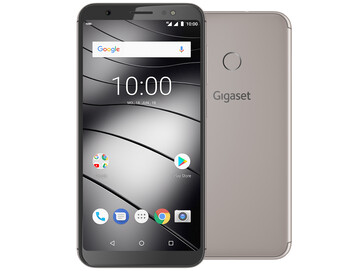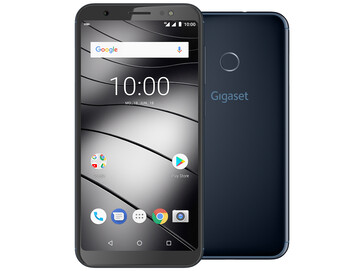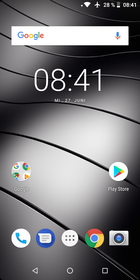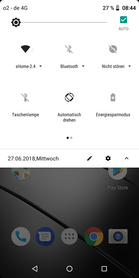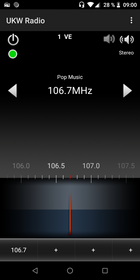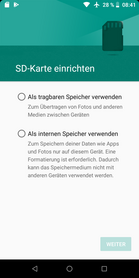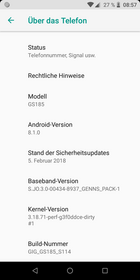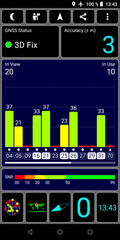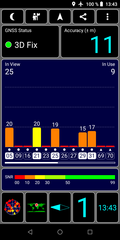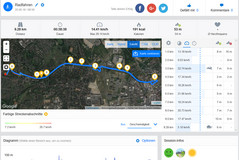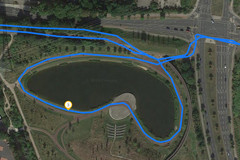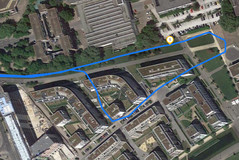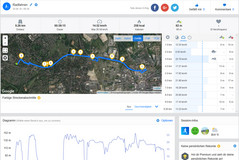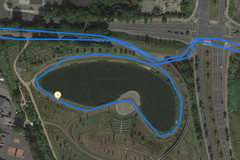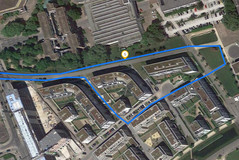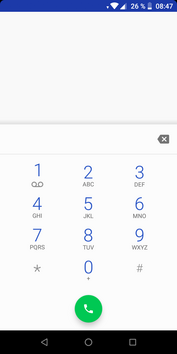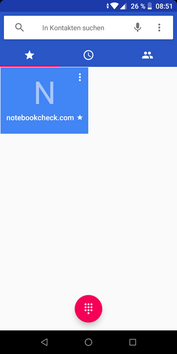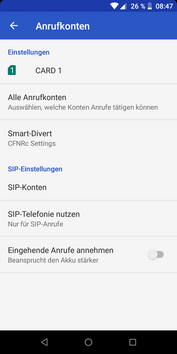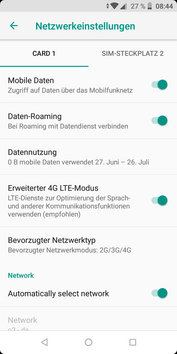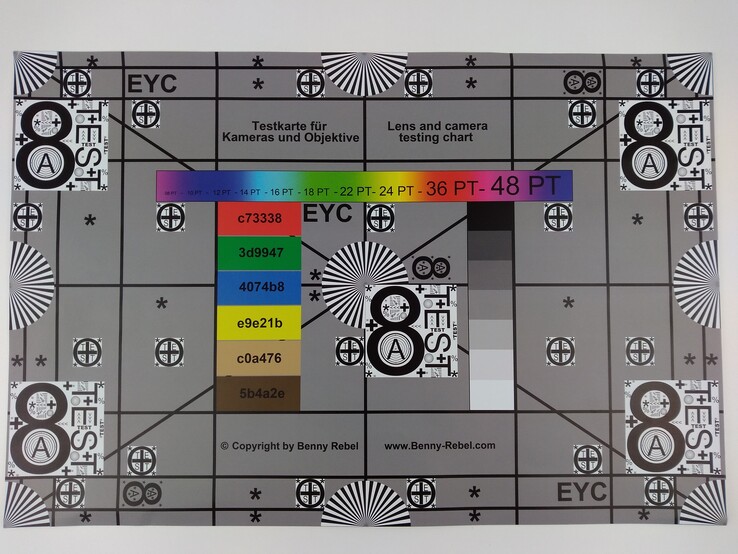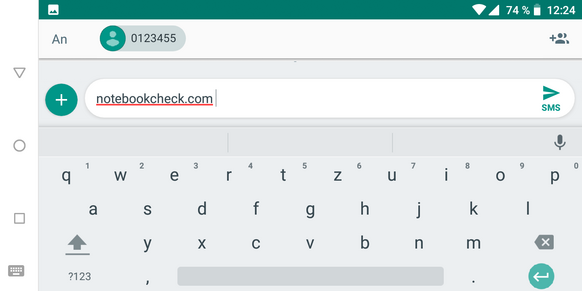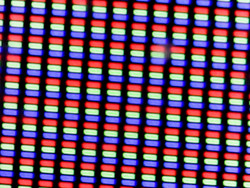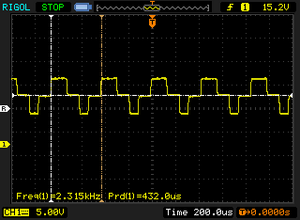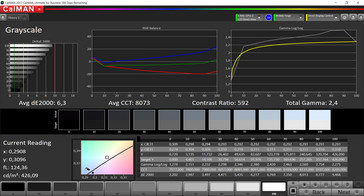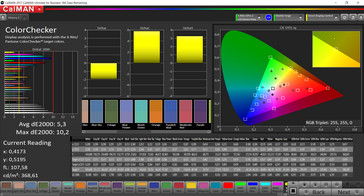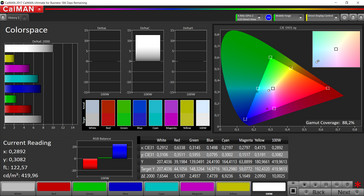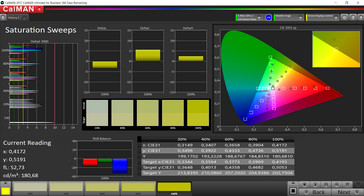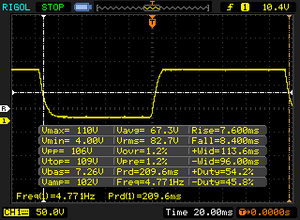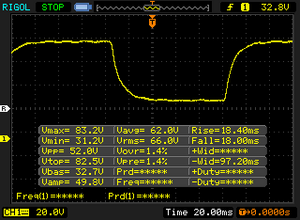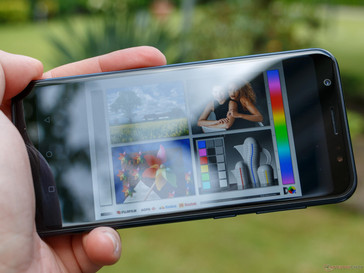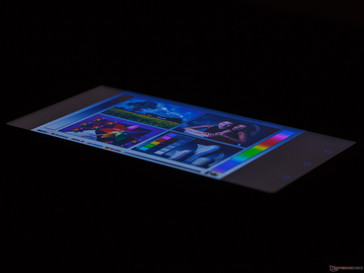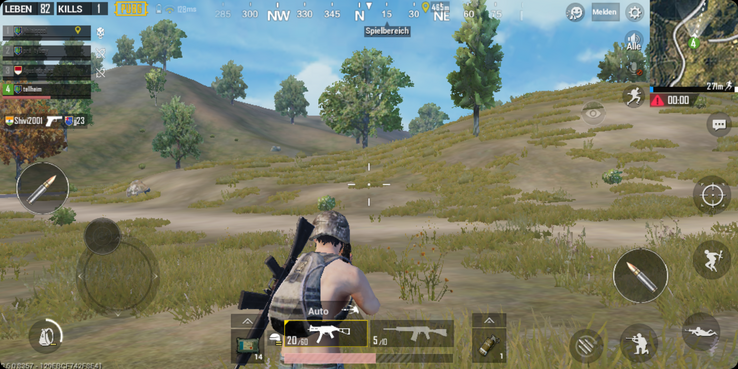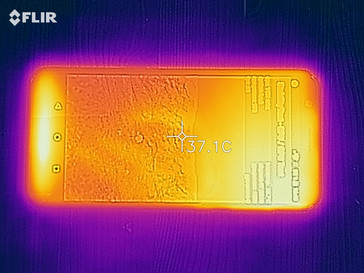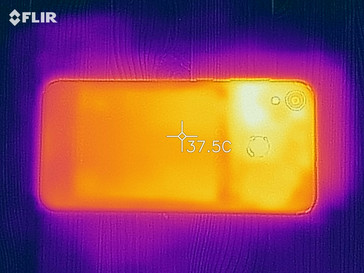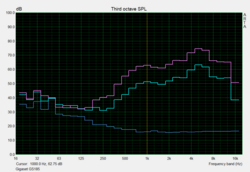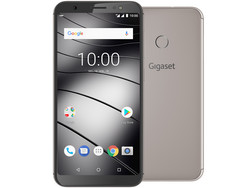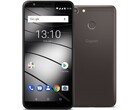Gigaset GS185 Smartphone Review

With the GS185, Gigaset chooses an entry-level model as opposed to a flagship smartphone to be manufactured in Germany for the first time. The expression made in Germany is technically already overselling things, since the required parts continue to arrive from the Far East. The phones themselves are assembled in Bocholt; design and repairs happen there as well.
The Gigaset GS185 possesses a comparatively diminutive display, with the small HD resolution, a 2:1 aspect ratio and a diagonal screen size of 5.5-inches. We regard the latter as reasonable, since smartphones with small displays are becoming rarer. The GS185 is powered by an older 400 series Snapdragon. In addition, 2 GB RAM and 16 GB internal storage are available, the latter of which is expandable through a microSD card. A 13 MP camera can be found both on the front and on the back. The battery is quite large at 4000 mAh. With an MSRP of 179 Euros (~$208), the Gigaset cell phone is sure to be an exciting alternative.
In this review, we chose the Honor 7C, Xiaomi Mi A1, Huawei Y6 2018 as well as the LG K8 (2017) as competitors, since they have an MSRP in the same range. However, smartphones such as the Nokia 6 or Samsung Galaxy J5 have now become available for the same price as well.
Case - GS185 with scratch-resistant glass
The Gigaset GS185 is available in Metal Cognac and Midnight Blue colors and is made of plastic. The front is protected by a rounded-off, scratch-resistant 2.5D glass, which can be easily cleaned. The Gigaset phone is also one of the lightest smartphones in the comparison; only the LG K8 (142 grams/~5.01oz) is even lighter.
The quality of the workmanship is good. Clearances are tight and even. However, twisting causes it to creak audibly and firmly pressing on the screen results in the characteristic corrugation of the liquid crystal display.
The battery is permanently installed into the device and cannot be swapped out by the user. The card slot is able to accommodate two nano-SIM and one microSD cards and is entirely made of plastic.
Features - Basics plus radio sounds
As per usual in this price range, the Gigaset GS185 still relies on a micro USB 2.0 port. It supports OTG in order to enable connecting external input devices or memory sticks to the device. It is also possible to charge other smartphones with the GS185.
According to Gigaset, the microSD card slot supports memory cards with up to 256 GB, which corresponds to the SDXC standard. Since there are larger cards using this standard, they should work without issues as well. The additional storage can be formatted as internal storage.
Furthermore, there is Bluetooth 4.2 and an FM radio receiver, but there is no NFC. The two-color notification LED informs the user about new messages, missed calls and the battery charge level.
Software - Gigaset - Handy with Android Oreo
The relatively new Google Android 8.1 Oreo operating system runs on the Gigaset GS185. At the time of testing, the latest available security patches are from February 5, 2018. However, Gigaset has announced that the GS185 will receive quarterly updates for two years. There are no plans for a major update to the next Android version.
Gigaset did not change the interface and the inclusion of the company's own apps was kept within reasonable limits as well. The Gigaset app only links to further articles from the online store and the appropriate manuals can be quickly and easily downloaded through the Help app. Moreover, there is a sound recorder and a radio app. The latter is able to store five stations and also has a recording feature.
Android user account control is active as well and able to manage guest access.
Communication and GPS - The bare necessities are included
The communication features of the Gigaset GS185 are in line with those of its class and provide the user with a solid amount of basic features. The phone connects to mobile networks via LTE Cat. 4. While the maximum transfer speeds of mobile data networks cannot be exhausted this way, they are more than sufficient for mobile browsing or streaming.
The user gets the bare minimum in terms of Wi-Fi as well, since the module merely supports the IEEE-802.11 b/g/n standards and only receives 2.4 GHz signals. Accordingly, the transfer rates with our reference router Linksys EA8500 are moderate, yet they are slightly higher than usual for a smartphone with this configuration and are particularly stable. All in all, the Wi-Fi of the GS185 is convincing in day-to-day use, it has a good range and there are no disconnections.
| Networking | |
| iperf3 transmit AX12 | |
| Samsung Galaxy J5 (2017) Duos | |
| Gigaset GS185 | |
| Honor 7C | |
| Huawei Y6 2018 | |
| LG K8 2017 | |
| iperf3 receive AX12 | |
| Samsung Galaxy J5 (2017) Duos | |
| Gigaset GS185 | |
| LG K8 2017 | |
| Huawei Y6 2018 | |
| Honor 7C | |
The Gigaset GS185 supports the satellite navigation systems GPS (including A-GPS) and Glonass. During the test with the app GPS Test, the smartphone was also able to detect BeiDou satellites. The satfix is established very quickly outdoors and is also very precise with an accuracy of within three meters. Indoors, locating takes around 10 seconds, although it does level out at a reasonable value.
The GS185 has to prove itself against the bike computer Garmin Edge 500 on a small bike ride. On the route with a total distance of 9 km, the two only differ by 20 meters. Looking at the route in detail confirms the good locating qualities of the Gigaset phone.
Telephony and Call Quality
We were pleasantly surprised by the Gigaset GS185's telephony, something that is not a given in this price range. The telephony app matches the Android standard and is clearly arranged. Additional SIP accounts can be set up in the settings. Likewise, VoLTE and VoWiFi including HD-voice are supported.
The speech quality is really good. When the phone is put up to the ear, we are understood clearly and we can talk to our conversational partner without issues. We were surprised about the high range of the microphone in speakerphone mode. This is advantageous for being able to move farther away from the Gigaset phone, but a disadvantage of this is the recording of ambient noise, which is transmitted as well. The included headset makes for decent communication, but it is not a replacement if you make a lot of calls.
Cameras - Not amazing but surprisingly good
The Gigaset GS185 offers a 13 MP camera on both sides. The front model (f/2.2) has a fixed-focus lens and an LED for recordings in the dark. Under good lighting conditions, the pictures turn out well. Additionally, Full HD video, which can be recorded, is of decent quality as well, as long as you refrain from using the electronic image stabilization (EIS).
The main camera on the back presents itself as slightly more light-sensitive (f/2.0) and takes good pictures in daylight. Only under varying lighting conditions does the camera tend to overexpose the bright areas. We very much like the color representation and the sharpness of the image is consistent as well. While there is a small decrease in sharpness towards the edges, it stays within reasonable limits. The Galaxy J5 is only marginally better in this area, but its color balance is significantly cooler. Low-light pictures are similar. Here, the GS185 and the J5 achieve similar results as well, while both being far superior to the Honor 7C. The shutter lag of the test smartphone is reasonable, but it takes a relatively long time for the camera to start up.
The Gigaset phone captures Full HD video at 30 frames per second. The sound is good and there is an EIS that is significantly better than the one on the front. The image quality is decent, but it does not reach those of more expensive models.
Accessories and Warranty
The Gigaset GS185 comes in a printed cardboard box. The quick-start guide includes safety instructions as well as warranty information and is unilingual, causing it to be very slim. Gigaset banks on sustainability in many regards and, if the worst comes to the worst, prefers repairing a smartphone in Bocholt directly to completely replacing it or sending it to the Far East for an expensive shipping fee.
Aside from the modular charger (5 volts, 1.5 amperes), there is a USB cable, a SIM tool as well as a headset. The cell phone has 24 months warranty. Please see our Guarantees, Return policies and Warranties FAQ for country-specific information.
Input Devices & Handling
The capacitive touchscreen of the Gigaset GS185 possesses good gliding properties and is able to recognize up to five simultaneous touches. The inputs are reliably recognized all the way to the edges, but the command execution speed could be snappier, which is something that can be attributed to the overall somewhat meager system speed.
The fingerprint sensor on the back unlocks the Gigaset smartphone very reliably and supports swiping gestures, for example to scroll through screen content, open and trigger the camera as well as accepting or ending calls. Up to five fingers can be stored. The large amount of time that the GS185 needs to wake up from standby is a disadvantage that becomes apparent in day-to-day use. Sometimes, up to three seconds can elapse between pressing the power button and the screen lighting up.
Gigaset relies on the Google GBoard keyboard layout. Alternatives can be installed from the Google Play Store. Typing is haptically confirmed through a gentle vibration.
Display - GS185 with mediocre brightness adjustment
The IPS display of the Gigaset GS185 measures 5.5-inches (13.97 cm) diagonally. It has a resolution of 1440x720 pixels, resulting in a good pixel density. When looking at it closely, the pixel pattern becomes discernible, but it did not stand out during the test.
The brightness is average for the class. The Illumination is good, but the black value of 0.7 cd/m² is slightly too high, making black areas appear dark gray. The measurements are similar with the ambient light sensor enabled and an even distribution of bright and dark areas. We were not quite convinced by the light sensor itself. Although the adjustment of the display works and the luminance increases particularly outdoors, the sensor is quite stingy otherwise, often causing the screen to be too dark for our taste.
| |||||||||||||||||||||||||
Brightness Distribution: 86 %
Center on Battery: 426 cd/m²
Contrast: 609:1 (Black: 0.7 cd/m²)
ΔE ColorChecker Calman: 5.3 | ∀{0.5-29.43 Ø4.78}
ΔE Greyscale Calman: 6.3 | ∀{0.09-98 Ø5}
88.2% sRGB (Calman 2D)
Gamma: 2.4
CCT: 8073 K
| Gigaset GS185 IPS, 1440x720, 5.5" | Honor 7C IPS, 1440x720, 6" | LG K8 2017 IPS, 1280x720, 5" | Huawei Y6 2018 IPS, 1440x720, 5.7" | Samsung Galaxy J5 (2017) Duos Super AMOLED, 1280x720, 5.2" | Nokia 6 IPS, 1920x1080, 5.5" | |
|---|---|---|---|---|---|---|
| Screen | 6% | -7% | 20% | 25% | 24% | |
| Brightness middle (cd/m²) | 426 | 392 -8% | 358 -16% | 483 13% | 448 5% | 512 20% |
| Brightness (cd/m²) | 412 | 403 -2% | 351 -15% | 460 12% | 451 9% | 501 22% |
| Brightness Distribution (%) | 86 | 85 -1% | 93 8% | 88 2% | 91 6% | 94 9% |
| Black Level * (cd/m²) | 0.7 | 0.61 13% | 0.49 30% | 0.4 43% | 0.36 49% | |
| Contrast (:1) | 609 | 643 6% | 731 20% | 1208 98% | 1422 133% | |
| Colorchecker dE 2000 * | 5.3 | 5.4 -2% | 7.1 -34% | 5.8 -9% | 2.7 49% | 6.4 -21% |
| Colorchecker dE 2000 max. * | 10.2 | 9.7 5% | 14.9 -46% | 12.6 -24% | 9.8 4% | 10.9 -7% |
| Greyscale dE 2000 * | 6.3 | 4.2 33% | 6.5 -3% | 5 21% | 1.6 75% | 7.2 -14% |
| Gamma | 2.4 92% | 2.59 85% | 2.12 104% | 2.6 85% | 2.06 107% | 2.28 96% |
| CCT | 8073 81% | 6734 97% | 8166 80% | 7709 84% | 6557 99% | 7904 82% |
| Colorchecker dE 2000 calibrated * | 4.42 |
* ... smaller is better
Screen Flickering / PWM (Pulse-Width Modulation)
| Screen flickering / PWM detected | 2315 Hz | ≤ 3 % brightness setting | |
The display backlight flickers at 2315 Hz (worst case, e.g., utilizing PWM) Flickering detected at a brightness setting of 3 % and below. There should be no flickering or PWM above this brightness setting. The frequency of 2315 Hz is quite high, so most users sensitive to PWM should not notice any flickering. In comparison: 53 % of all tested devices do not use PWM to dim the display. If PWM was detected, an average of 8108 (minimum: 5 - maximum: 343500) Hz was measured. | |||
We analyze the color accuracy of the Gigaset GS185 using the analysis software CalMAN and a spectrophotometer. The grayscales show a blue tint that is particularly apparent in white and brighter gray tones. The colors are all rather dark, which in day-to-day use creates a fairly matte image that comes partly from the weak contrast ratio. The GS185 does not provide a reference display, which should come as no surprise.
Display Response Times
| ↔ Response Time Black to White | ||
|---|---|---|
| 16 ms ... rise ↗ and fall ↘ combined | ↗ 7.6 ms rise | |
| ↘ 8.4 ms fall | ||
| The screen shows good response rates in our tests, but may be too slow for competitive gamers. In comparison, all tested devices range from 0.1 (minimum) to 240 (maximum) ms. » 36 % of all devices are better. This means that the measured response time is better than the average of all tested devices (20.2 ms). | ||
| ↔ Response Time 50% Grey to 80% Grey | ||
| 36.4 ms ... rise ↗ and fall ↘ combined | ↗ 18.4 ms rise | |
| ↘ 18 ms fall | ||
| The screen shows slow response rates in our tests and will be unsatisfactory for gamers. In comparison, all tested devices range from 0.165 (minimum) to 636 (maximum) ms. » 51 % of all devices are better. This means that the measured response time is worse than the average of all tested devices (31.6 ms). | ||
The Gigaset cell phone's outdoor performance is solid. It can be used well in the shade; however, it struggles in direct sunlight even at maximum brightness.
The viewing-angle stability of the IPS display in the GS185 is less than impressive for this type of panel. A noticeable loss in luminance can be observed at shallow angles, the image becomes even cooler still and an IPS glow effect can be seen in dark areas.
Performance - Old SoC with hardly any surplus performance
The Gigaset GS185 is powered by a Qualcomm Snapdragon 425 from 2016. In 2018, this is a fairly old entry-level SoC, which may already cause disillusionment when looking at the data sheet. The reason being that this is a weak quad-core processor with a maximum clock speed of 1.4 GHz that was manufactured using the comparatively inefficient 28 nm process. Also included are 2 GB RAM and an Adreno 308.
The mediocre performance shows in benchmarks as well, since the GS185 is one of the slowest smartphones in the comparison and is only able to pull ahead of the LG K8, which uses the same SoC, in some areas. The system performance in particular reflects this. Even in day-to-day use, the smartphone seems to require a second to think here and there, in order to start an app or even to wake up from standby. Here, the manufacturer would have been well-advised to install a more modern processor.
| AnTuTu v6 - Total Score (sort by value) | |
| Gigaset GS185 | |
| Honor 7C | |
| Samsung Galaxy J5 (2017) Duos | |
| Huawei Y6 2018 | |
| LG K8 2017 | |
| Xiaomi Mi A1 | |
| Nokia 6 | |
| Average Qualcomm Snapdragon 425 (MSM8917) (29054 - 39106, n=17) | |
| AnTuTu v7 - Total Score (sort by value) | |
| Gigaset GS185 | |
| Honor 7C | |
| Samsung Galaxy J5 (2017) Duos | |
| Huawei Y6 2018 | |
| LG K8 2017 | |
| Xiaomi Mi A1 | |
| Average Qualcomm Snapdragon 425 (MSM8917) (32557 - 46710, n=10) | |
The Gigaset GS185 is able to claim one of the middle ranks in the browser benchmarks; only the Mozilla Kraken results are rather weak, even if it is still slightly faster than the Huawei Y6 (2018). The speed during browsing is still good, as long as you do not want to play online games through the browser. Loading complex web pages takes slightly longer, but it does not present a grave shortcoming.
| JetStream 1.1 - Total Score | |
| Samsung Galaxy J5 (2017) Duos (Samsung Browser 5.4) | |
| Xiaomi Mi A1 | |
| Honor 7C (Chrome 66) | |
| Huawei Y6 2018 (Chrome 66) | |
| Gigaset GS185 (Chrome 66) | |
| Nokia 6 (Chrome 59.0.3071.125) | |
| Average Qualcomm Snapdragon 425 (MSM8917) (15.5 - 18.7, n=16) | |
| LG K8 2017 (Chrome 57) | |
| Octane V2 - Total Score | |
| Average of class Smartphone (2228 - 121337, n=197, last 2 years) | |
| Samsung Galaxy J5 (2017) Duos (Samsung Browser 5.4) | |
| Xiaomi Mi A1 | |
| Honor 7C (Chrome 66) | |
| Gigaset GS185 (Chrome 66) | |
| LG K8 2017 (Chrome 57) | |
| Average Qualcomm Snapdragon 425 (MSM8917) (2411 - 3374, n=17) | |
| Nokia 6 (Chrome 59.0.3071.125) | |
| Huawei Y6 2018 (Chrome 66) | |
| Mozilla Kraken 1.1 - Total | |
| Huawei Y6 2018 (Chrome 66) | |
| Gigaset GS185 (Chrome 66) | |
| Average Qualcomm Snapdragon 425 (MSM8917) (10742 - 16192, n=17) | |
| Nokia 6 (Chrome 59.0.3071.125) | |
| Honor 7C (Chrome 66) | |
| LG K8 2017 (Chrome 57) | |
| Xiaomi Mi A1 | |
| Samsung Galaxy J5 (2017) Duos (Samsung Browser 5.4) | |
| Average of class Smartphone (257 - 28190, n=154, last 2 years) | |
| WebXPRT 2015 - Overall | |
| Samsung Galaxy J5 (2017) Duos (Samsung Browser 5.4) | |
| Gigaset GS185 (Chrome 66) | |
| Average Qualcomm Snapdragon 425 (MSM8917) (62 - 79, n=8) | |
| Huawei Y6 2018 (Chrome 66) | |
| Nokia 6 (Chrome 59.0.3071.125) | |
| WebXPRT 3 - Overall | |
| Average of class Smartphone (38 - 380, n=31, last 2 years) | |
| Huawei Y6 2018 (Chrome 66) | |
| Gigaset GS185 (Chrome 66) | |
| Average Qualcomm Snapdragon 425 (MSM8917) (24 - 28, n=5) | |
* ... smaller is better
The Gigaset GS185 offers just 16 GB of internal eMMC memory, which is not unusual for its price range, but the Honor 7C (32 GB) shows that there is room for more. After starting the device for the first time, users of the GS185 have around 9.3 GB at their disposal. The speed of the installed memory is decent and primarily shows its strength in reading operations, whereas the GS185 falls somewhat behind its competition in terms of writing data.
The storage space can be expanded through a microSD card. We test the speed of the slot with our reference card Toshiba Exceria Pro M501. It is on an adequate level, even if the capabilities of the microSD card are not exhausted.
| Gigaset GS185 | Honor 7C | LG K8 2017 | Huawei Y6 2018 | Samsung Galaxy J5 (2017) Duos | Average 16 GB eMMC Flash | Average of class Smartphone | |
|---|---|---|---|---|---|---|---|
| AndroBench 3-5 | 29% | 22% | 11% | -11% | -25% | 2289% | |
| Sequential Read 256KB (MB/s) | 275.7 | 297 8% | 270.8 -2% | 254.3 -8% | 204.4 -26% | 164.5 ? -40% | 2228 ? 708% |
| Sequential Write 256KB (MB/s) | 45.54 | 115 153% | 84.6 86% | 65.6 44% | 52 14% | 43 ? -6% | 1852 ? 3967% |
| Random Read 4KB (MB/s) | 31.71 | 30 -5% | 41.6 31% | 38.8 22% | 24.07 -24% | 21.7 ? -32% | 296 ? 833% |
| Random Write 4KB (MB/s) | 9.05 | 10 10% | 12.5 38% | 9 -1% | 9.9 9% | 8.08 ? -11% | 339 ? 3646% |
| Sequential Read 256KB SDCard (MB/s) | 84.3 ? | 83.9 ? 0% | 78.6 ? -7% | 84.9 ? 1% | 72.2 ? -14% | 59.1 ? -30% | |
| Sequential Write 256KB SDCard (MB/s) | 59.7 ? | 62.6 ? 5% | 52.2 ? -13% | 64 ? 7% | 44.21 ? -26% | 39.8 ? -33% |
Games - Not everything is playable
The age of the SoC can be felt when it comes to games, since the Adreno 308 is not contemporary anymore. This is not just due to the raw speed but also because of the lack of support for modern APIs such as OpenGL ES 3.1 (and newer) or Vulkan. Still, simple games such as Candy Crush or Bubble Witch 3 do not bring the Gigaset GS185 to its limits. Should you wish to play modern games such as PUBG Mobile though, you will be disappointed. Using GameBench, we determined that the game does not run smoothly even at the lowest settings.
The touchscreen is sufficiently accurate, although it could be slightly more responsive in fast skill games. Furthermore, the speaker on the bottom edge is easy to cover up in landscape mode.
| PUBG Mobile | |||
| Settings | Value | ||
| Smooth | 22 fps | ||
Emissions - Strong battery with average running times
Temperature
The surface temperatures of the Gigaset GS185 are largely cool during idle, just the front gets partially and noticeably hot even then. Under continuous load, the Gigaset smartphone becomes very warm, even if the temperatures still do not reach critical values.
Using GFXBench's battery test, we tested the performance stability under continuous load. While the smartphone did not reach high frame rates in the T-Rex test, they are stable and vary very little. We were unable to run the more intensive Manhattan test due to missing API support.
(±) The maximum temperature on the upper side is 42 °C / 108 F, compared to the average of 35.2 °C / 95 F, ranging from 21.9 to 247 °C for the class Smartphone.
(±) The bottom heats up to a maximum of 41 °C / 106 F, compared to the average of 34 °C / 93 F
(+) In idle usage, the average temperature for the upper side is 30.5 °C / 87 F, compared to the device average of 32.9 °C / 91 F.
Speaker
The Gigaset GS185 has a sufficiently loud speaker on the bottom edge. The sound quality, relative to the price range, is good as well. The sound quality when listening to a song or watching a YouTube video is decent, as long as the smartphone does not have to play them at maximum volume. Then, high frequency sounds are distorted and the sound becomes very dull overall.
The included headset is not quite able to convince us in terms of music playback and has a treble-prone sound that lacks strength. The audio jack output quality is good.
Gigaset GS185 audio analysis
(±) | speaker loudness is average but good (80.4 dB)
Bass 100 - 315 Hz
(-) | nearly no bass - on average 25.1% lower than median
(+) | bass is linear (4.4% delta to prev. frequency)
Mids 400 - 2000 Hz
(+) | balanced mids - only 3.1% away from median
(±) | linearity of mids is average (7.2% delta to prev. frequency)
Highs 2 - 16 kHz
(±) | higher highs - on average 7.7% higher than median
(+) | highs are linear (6.6% delta to prev. frequency)
Overall 100 - 16.000 Hz
(±) | linearity of overall sound is average (25% difference to median)
Compared to same class
» 61% of all tested devices in this class were better, 7% similar, 33% worse
» The best had a delta of 11%, average was 35%, worst was 134%
Compared to all devices tested
» 76% of all tested devices were better, 5% similar, 19% worse
» The best had a delta of 4%, average was 24%, worst was 134%
Samsung Galaxy J5 (2017) Duos audio analysis
(+) | speakers can play relatively loud (86.8 dB)
Bass 100 - 315 Hz
(-) | nearly no bass - on average 24.1% lower than median
(±) | linearity of bass is average (10.1% delta to prev. frequency)
Mids 400 - 2000 Hz
(+) | balanced mids - only 2.4% away from median
(+) | mids are linear (4.6% delta to prev. frequency)
Highs 2 - 16 kHz
(±) | higher highs - on average 6.2% higher than median
(+) | highs are linear (4.7% delta to prev. frequency)
Overall 100 - 16.000 Hz
(±) | linearity of overall sound is average (18.8% difference to median)
Compared to same class
» 22% of all tested devices in this class were better, 10% similar, 68% worse
» The best had a delta of 11%, average was 35%, worst was 134%
Compared to all devices tested
» 42% of all tested devices were better, 8% similar, 50% worse
» The best had a delta of 4%, average was 24%, worst was 134%
Battery Life
Energy Consumption
The energy consumption values of the Gigaset GS185 are almost all good; only the energy consumption in standby mode is way too high at 0.42 watts, which is reflected in the battery quickly losing charge. The GS185 loses around 20% of its charge in just eight hours, just by lying around. This is something Gigaset has to urgently rectify.
Thankfully, the GS185 comes with a relatively large 4000 mAh battery. It can be fully charged in around three-and-a-half hours using the included charger.
| Off / Standby | |
| Idle | |
| Load |
|
Key:
min: | |
| Gigaset GS185 4000 mAh | Honor 7C 3000 mAh | Samsung Galaxy J5 (2017) Duos 3000 mAh | Huawei Y6 2018 3000 mAh | LG K8 2017 2500 mAh | Xiaomi Mi A1 3080 mAh | Nokia 6 3000 mAh | Average Qualcomm Snapdragon 425 (MSM8917) | Average of class Smartphone | |
|---|---|---|---|---|---|---|---|---|---|
| Power Consumption | -4% | 31% | -86% | 4% | -118% | -10% | -43% | -54% | |
| Idle Minimum * (Watt) | 0.54 | 0.6 -11% | 0.52 4% | 1.7 -215% | 0.65 -20% | 2.2 -307% | 0.63 -17% | 1.113 ? -106% | 0.842 ? -56% |
| Idle Average * (Watt) | 1.74 | 2.16 -24% | 1.17 33% | 2.5 -44% | 1.6 8% | 2.8 -61% | 1.75 -1% | 2.19 ? -26% | 1.439 ? 17% |
| Idle Maximum * (Watt) | 1.78 | 2.24 -26% | 1.24 30% | 3.2 -80% | 1.62 9% | 3.4 -91% | 1.87 -5% | 2.55 ? -43% | 1.624 ? 9% |
| Load Average * (Watt) | 3.55 | 2.59 27% | 1.66 53% | 5.2 -46% | 2.97 16% | 6.2 -75% | 3.56 -0% | 4.32 ? -22% | 7.03 ? -98% |
| Load Maximum * (Watt) | 4.66 | 4.11 12% | 2.94 37% | 6.8 -46% | 4.34 7% | 7.2 -55% | 5.85 -26% | 5.5 ? -18% | 11.3 ? -142% |
* ... smaller is better
Battery Life - Good but could be better
The Gigaset GS185 is equipped with the largest energy storage (4000 mAh) in the comparison, causing it to achieve good battery running times. In our "Browsing via Wi-Fi" test, which we run at an adjusted display brightness of 150 cd/m², it manages to reach close to 11 hours.
This is a good result overall, but when looking at the competition, it is not very efficient. The Galaxy J5 lasts 80 minutes longer, despite having a 25% smaller battery. This is something Gigaset should be able to improve with an update. The prerequisites are certainly good.
Only the default Android system energy-saving mode is available. Even if the GS185's yield is suboptimal, it has more than enough stamina for a whole day.
| Gigaset GS185 4000 mAh | Honor 7C 3000 mAh | Samsung Galaxy J5 (2017) Duos 3000 mAh | Huawei Y6 2018 3000 mAh | LG K8 2017 2500 mAh | Xiaomi Mi A1 3080 mAh | Nokia 6 3000 mAh | |
|---|---|---|---|---|---|---|---|
| Battery runtime | 5% | 12% | -3% | -10% | -4% | 2% | |
| WiFi v1.3 (h) | 11 | 11.6 5% | 12.3 12% | 10.7 -3% | 9.9 -10% | 10.6 -4% | 11.2 2% |
| Reader / Idle (h) | 26.1 | 22.2 | 28.3 | ||||
| H.264 (h) | 15.3 | 11.7 | 9 | ||||
| Load (h) | 7.5 | 4.7 | 4.7 | 3.8 |
Pros
Cons
Verdict
The Gigaset GS185 does a lot of things right and particularly wants to score through sustainability. This, on the one hand, entails a fairly long update span of two years for the price range, the slim package contents made of recyclable materials and the intention of repairing, instead of immediately replacing.
The "made in Germany" smartphone wants to shine with sustainability and offers a large 4000 mAh battery on top of that.
Even the relatively good cameras and the strong battery are not a given in this price range and speak for the GS185 as well. However, the manufacturer should do some fine tuning for the software, since the energy consumption in standby mode turned out to be too high and the system performance could be better, too. Waking up the Gigaset cell phone from standby in particular requires patience.
The installation of an SoC this old is incomprehensible to us however; with an up-to-date Snapdragon 450 being off the cards, we would have liked to see a 430, at least.
Gigaset GS185
- 06/29/2018 v6 (old)
Daniel Schmidt




